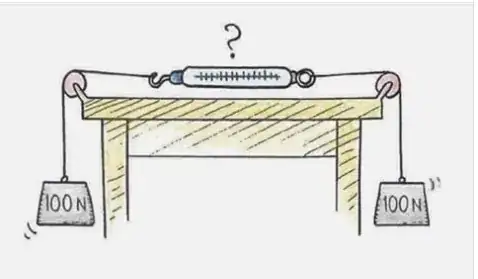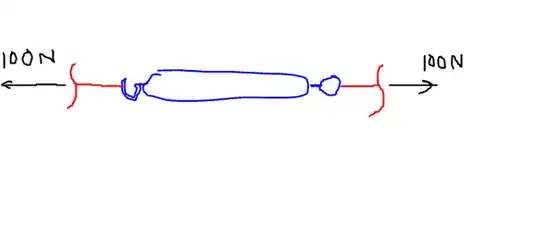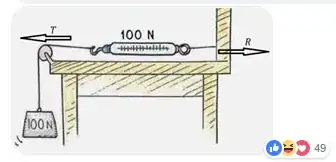So I came across this picture on facebook

My logic says it should show 200N, because you are pulling it with 100N on each side. On the other hand (as one of the facebook comments also stated, also saying is he is wrong he wasted 20k$ on physics degree), if you replace the right side with a wall you get this situation:
In this case I guess everyone agrees that the dynamometer would show 100N force. But if you isolate the dynamometer and "cut" the ropes on either picture, you would get the same thing. Because the system needs to be balanced, there would be 100N on each side.

And I study engineering too but I am confused by this. Why do we get the same distribution of forces, but dynamometer shows a different force?
